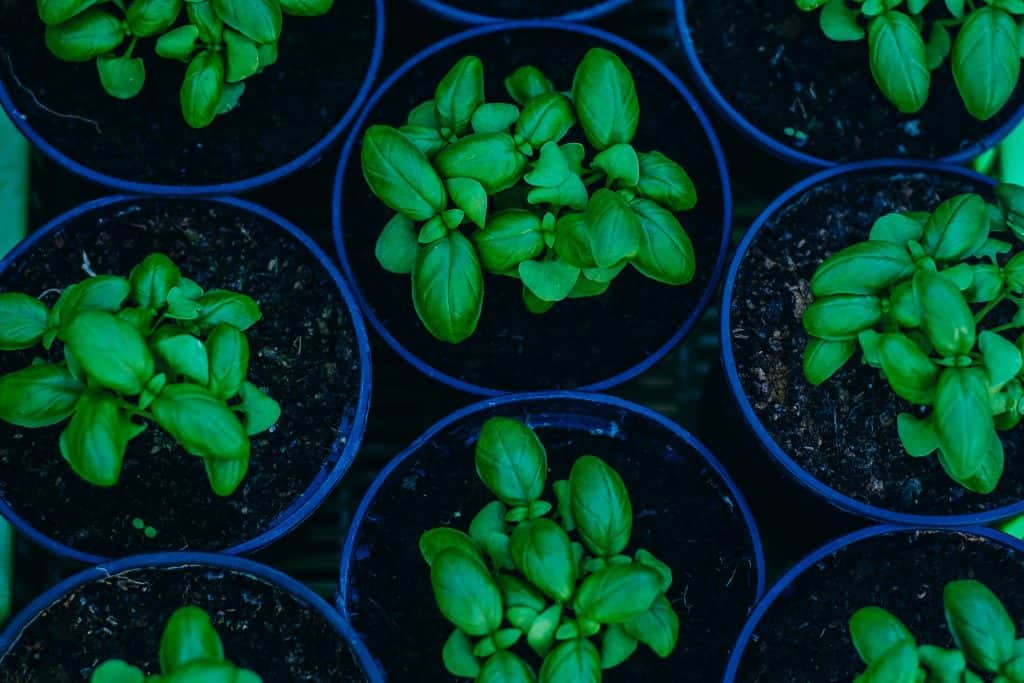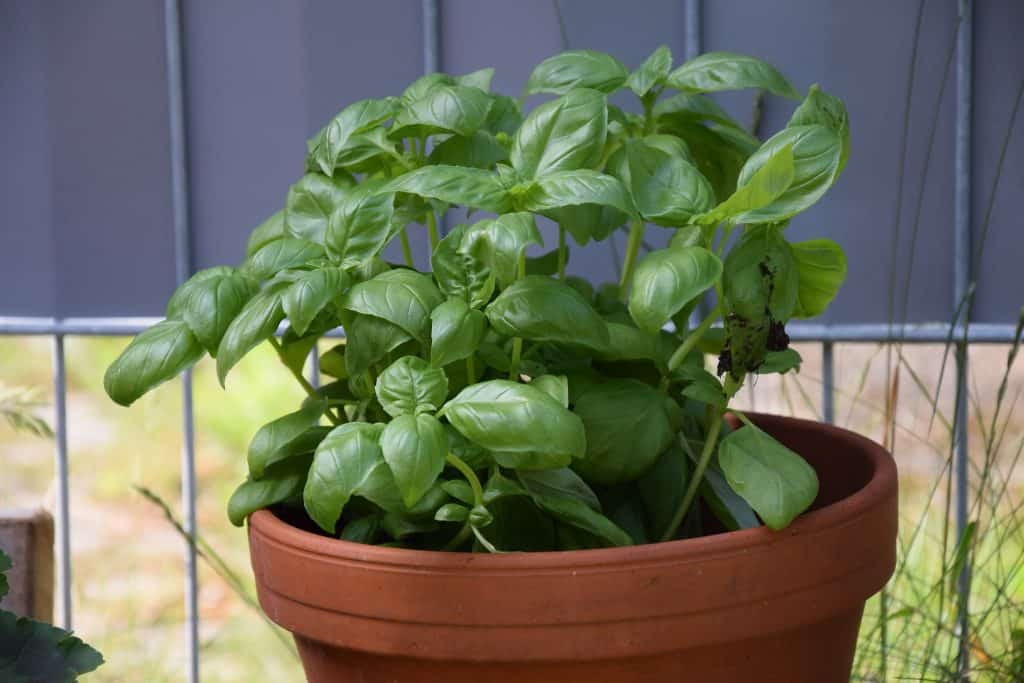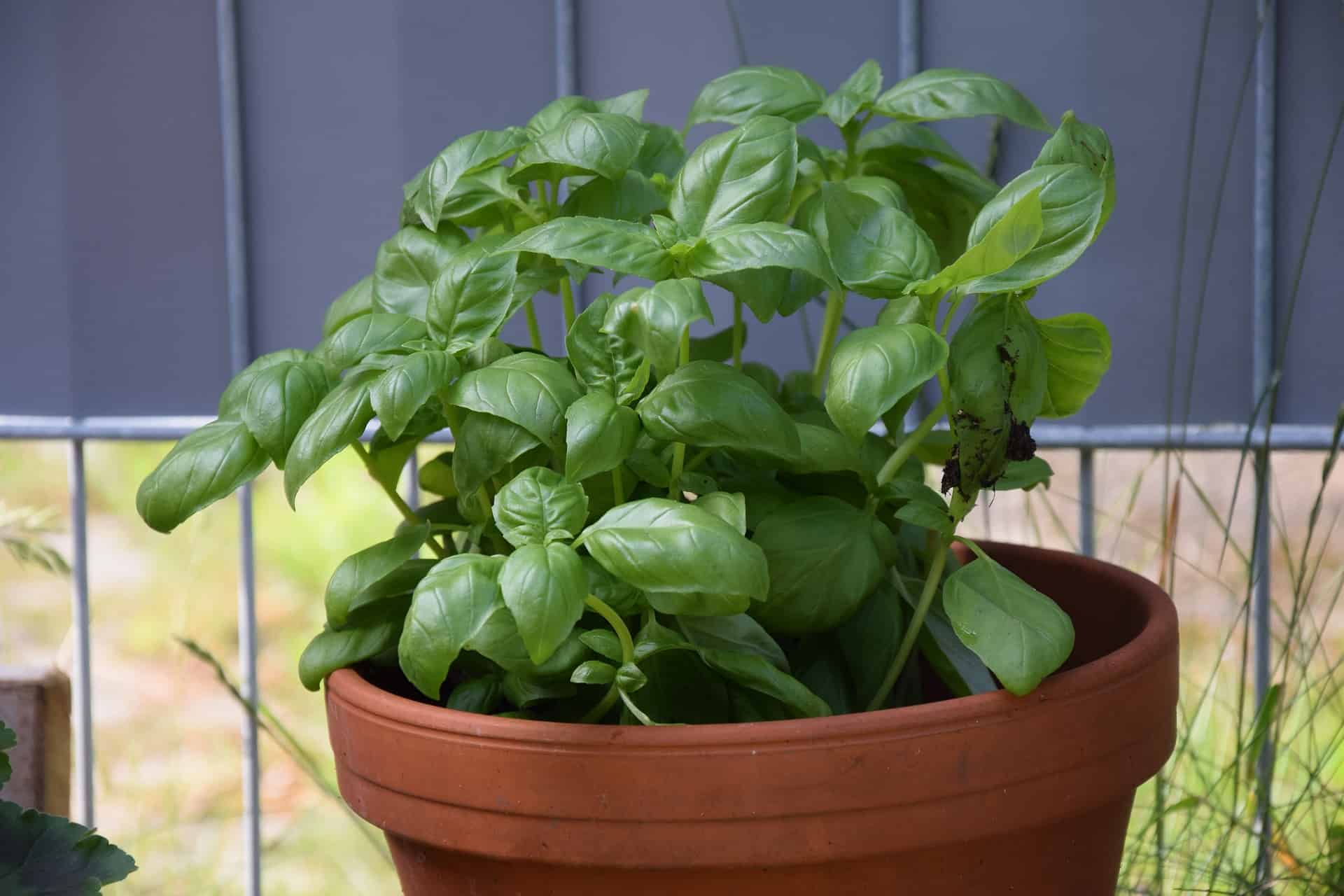As I always say, we need to learn and know a little bit more about our plants before growing them, this will help us know the needs of the plant, and it will guide us through a successful cycle. In this article, you will learn how to grow basil indoors hope it is helpful to you.
Basil is one of the most common culinary herbs available – it is versatile in its use in dishes in many cultures.
You can grow this herb outdoors or in the wild, but also indoors with the proper preparations and care.
So the question es, how to grow basil indoors? To start your journey to home-grown basil, you’ll need a few materials; this post will review the needed steps.
Materials – How to grow basil indoors
- Basil Seeds – for whichever type of basil you wish to grow and use.
- Starter pots – with or without drainage holes- will suffice just fine.
- Soil or Compost – one can use compost, nutrient-rich soil, or a combination.
- A spray bottle or similar apparatus for watering. A spray bottle with a fine mist is optimal.
- A reliable light source – generally a window that can provide sufficient exposure to sunlight; if you don’t have a window with sufficient light exposure, auxiliary lights like a compact fluorescent lamp or a grow light can be helpful.
Some optional materials can be convenient, such as indoor pruning shears – others can also help the quality of your basil, like seed starting mix or a plastic dome to help retain moisture in the soil.
You don’t have to use these, but they can be helpful. Before we go through the step-by-step process of growing basil indoors, one might be curious as to what variation of basil they wish to cultivate at home.
Choose Your Basil
While not a complete list, here are but a few of the different types of basil one can select:
- Sweet Basil – the most common and widely used variety, with oval leaves of medium glossy green, a fresh aroma, and mild flavor with a slight sweetness reminiscent of anise.
- Genovese Basil – a cultivated variety produced primarily in the Liguria region of Italy; compared to its sweet basil ‘cousin’, its leaves are slightly larger and flatter with prominent points with a similar flavor to sweet basil but with pepper and mint hints.
- Greek Basil – this cultivar (“cultivated variety”) is one of the smaller varieties of basil to exist; this type of basil is known for having small oval leaves and a flavor considered sweeter and more aromatic than either Italian basil type.
- Thai Basil – native to Southeast Asia, this variety is a sturdier cultivar with purple stems near the top of the plant and small, dark-pointed leaves; its flavor can be licorice-like with a spicy hint.
- Clove Basil – a larger variety of basil with a woody, dark green to purple colored stem; its leaves can be determined by their lime-colored hue and coarse serrations on its edges and are quite aromatic with a spicy and sweet flavor profile.
The First Step on How to grow basil indoors – Preparing and Planting
The journey of growing basil indoors starts, like many things, with preparation. In your starter pot, mix your soil, compost, or mixture of the two (whichever you choose or prefer to use) with incremental water additions.
The goal is to have your soil or compost moist enough to hold it together in your hand. If you happen to oversaturate, this can be remedied by adding additional dry soil or compost.
Fill your starter pot up to either 2/3’s or 3/4’s capacity with your now-ready soil, and then you can begin planting your seeds.
No matter which type of basil you’ve selected to grow at home, be generous with how many seeds you place in each container in case of failed germination.
With your seeds planted, cover them with additional soil or compost, then sprinkle or mist them with water while keeping the seeds somewhat immersed in the soil.
Your seed packet may have a suggested depth for your future basil plants; otherwise, a depth of 1/2 an inch will suffice.

The Second Step – Water, Light, and Temperature Regulation
Basil plants should stay moist, typically thriving with 1 inch of water a week.
With indoor growing, more frequent watering may be required to ensure its growth and development – especially in warmer climates.
The important thing about watering your basil plant is to keep the soil damp but not oversaturated.
Usually, a deep watering once a week would be fine, but if the soil is drying out faster, watering your plant two to three times a week might be necessary – this can be determined by the state of your soil.
As with any plant, sunlight is crucial for the growth of basil. The window must provide at least 6 hours of sunlight exposure.
If you’re using a fluorescent bulb or grow light, it’s best to keep your basil plants exposed to such lighting for about 12 hours a day with adequate distancing to avoid burning the leaves.
In addition to keeping the soil moist and leaves illuminated, placing your potted basil in a warm location is just as important.
In your home, a well-ventilated room with a temperature of around 70 degrees Fahrenheit (or 21.111 Celsius) is ideal for storing your plants.
After 7 to 10 days, on average, you should begin to see seedlings emerge from the soil.
After your seeds begin to sprout into these seedlings, you’ll need to resume with frequent misting to keep the soil moist and exposure to sunlight until you see the formation of two to three sets of ‘true leaves’ on your plant.
This brings us to the third step of pinching.
The Third Step – Pinching The Plant
Once you see your plant has grown in size and bears two or three sets of true leaves, you’ll need to encourage the growth of more leaves with a method of pruning called ‘pinching.’
You can pinch your plants either with shears or with your fingers. When you pinch, cut the main stem half an inch after a set of leaves, leaving the true leaves below the cut central stem intact.
Once the main stem is snipped, you should see two new central stems develop over time – while watching for these developing, branching stems, you’re free to resume regular plant maintenance until these newer shoots reach about 4 inches.
When this occurs, repeat the pruning process.
You can either use the cuttings you pinch off from your basil plant immediately for a dish or plant them to produce another basil plant.
Pruning your basil plant regularly is crucial as this not only improves the yield and look of your plants but also discourages flowering.
Once it begins to flower, your basil leaves will reduce in size and lose their flavor, becoming bitter. We don’t want that!

The Fourth Step – Transplantation
You may eventually need to move plants into a new pot or container – this is especially true if you started with a smaller-sized starter pot.
Once your basil plant begins the primary phase of its growth – which is known once a few sets of true leaves have formed – you should look into transplanting it into a pot that will help support its growth and increasing size.
If you leave a plant in a smaller container for too long, you risk making it unhealthy or ‘root-bound’.
A root-bound plant results from leaving plants that have outgrown their pot – this makes them unable to absorb enough nutrients due to insufficient space and the need for additional soil around their roots.
When considering relocating your plant into a good vessel, one sign to check is to look at its current container’s drainage holes (if applicable).
If the roots protrude from these drains or appear ‘cramped’ inside, it may be time to find a new, more accommodating ‘home’ for your herbs.
Conclusion – How to grow basil indoors
The information outlined above may serve as both a starting point and a guide for those who are eager or wish to begin growing basil and other similar herbs from the comforts of their household.
To summarize what we have discussed:
- Keep your soil fertile, nutrient-rich, and damp, but avoid making it excessively soggy, and plant your seeds.
- Keep your plants watered and misted while gauging the soil’s condition – and remember that a warmer environment indoors will likely require more frequent watering per week.
- Keep the basil plants in a room with excellent air circulation and a temperature around 70 degrees Fahrenheit to avoid wilting or potential infection from stagnant air or lower temperatures.
- Pinch and prune regularly to avoid flowering and its impact on the yield and quality of your basil.
- Transplant your plants when they outgrow their original or most recent pot to keep them healthy.

